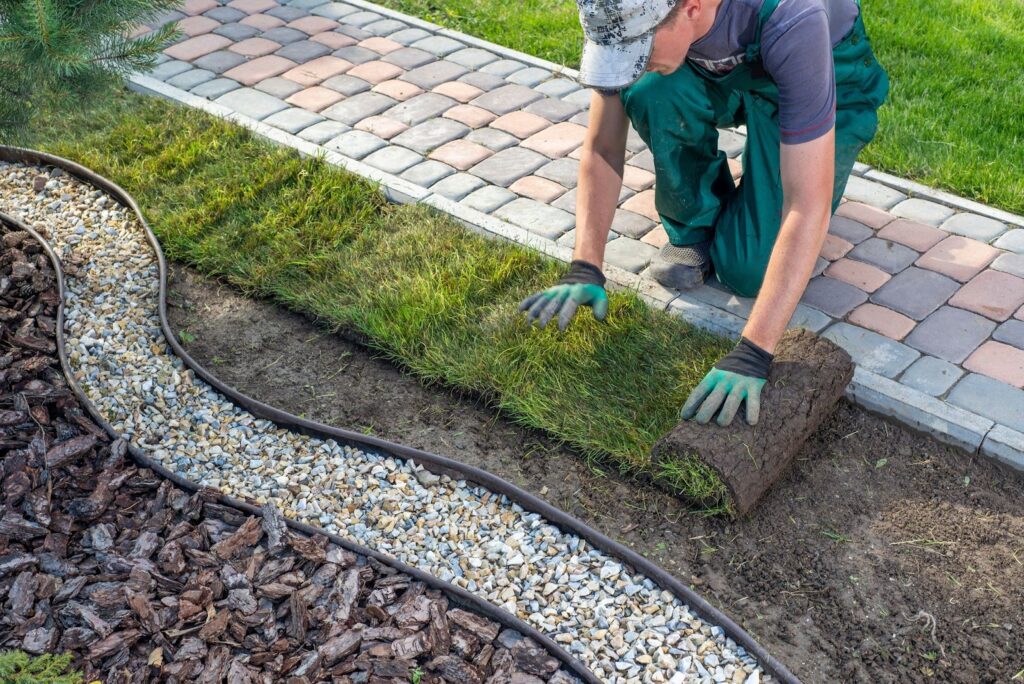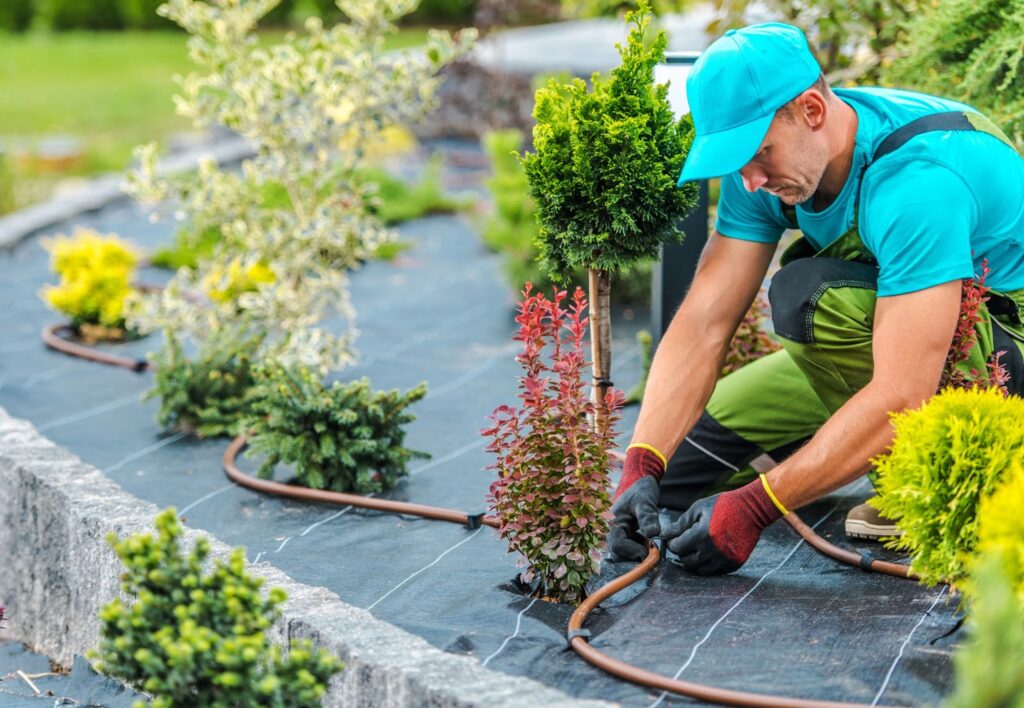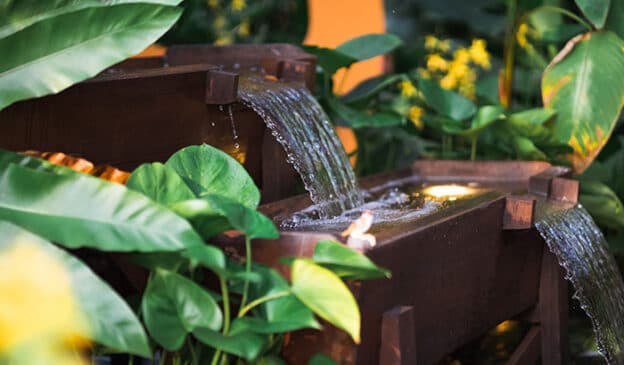Whether you’re a seasoned gardener or a newbie with a green dream, the magic of landscape installation is within your grasp. With every step, you’ll witness your vision taking shape, blending functionality with aesthetics in ways that truly redefine your property.
In this comprehensive guide, we’re your navigators, walking you through every facet of landscape installation. From initial assessments to the final touches, we’ll be your partners in this transformative journey. Your outdoor space holds immense potential, waiting for you to unlock it.
Preparing for Your Landscape Installation
When embarking on your landscape installation journey, thorough preparation is the cornerstone of success. It’s like setting the stage for a grand performance, where every detail matters. Let’s dive into the essential steps that will lay the foundation for your outdoor masterpiece.
Before the first seed is sown or the first stone is laid, take a moment to understand the canvas you’re working with. Assessing your outdoor area isn’t just a preliminary step; it’s crucial to ensure your landscape installation flourishes. Pay attention to the following aspects:
- Soil Quality
- Drainage
- Sunlight Exposure
- Existing Vegetation
The beauty of landscape installation lies in its versatility. What do you envision for your outdoor space? Is it a serene sanctuary where you can unwind after a long day? A vibrant play area for your kids? Or perhaps a thriving garden that provides fresh produce? Defining your goals shapes the design and influences the entire ambiance.
- Relaxing Retreat: If you’re looking to create a peaceful oasis, prioritize features like comfortable seating, soothing plants, and calming water elements.
- Play Area: For families, a play area with safe surfaces, age-appropriate play equipment, and vibrant plants can transform your backyard into a joyous haven.
- Productive Garden: If you’re a gardening enthusiast, plan for raised beds or designated areas for growing vegetables, herbs, or flowers. Landscape installation can be as modest or lavish as your imagination allows, but it’s crucial to establish a realistic budget. Without clear financial boundaries, costs can spiral quickly. Here are some budget-setting tips:
- Materials: Allocate funds for plants, soil, hardscaping materials, structures, and any other elements you plan to include.
- Labor: Consider whether you’ll be hiring professionals for tasks like grading, construction, or planting, and include labor costs in your budget.
- Unforeseen Costs: It’s wise to set aside a portion of your budget for unexpected expenses that may arise during the project.
Your landscape installation is as unique as you are, and these preparatory steps ensure that every corner of your outdoor space reflects your personality and desires.

Choosing the Right Elements for Your Landscape
In the realm of landscape installation, the choices you make become the building blocks of your outdoor masterpiece. From vibrant foliage to durable pathways, each element plays a vital role in creating an enchanting environment.
When it comes to selecting plants and trees, it’s not just about aesthetics — it’s about understanding your local environment. The climate and soil conditions influence the success of your green companions. Here’s how to choose wisely:
- Local Adaptation: Opt for plants and trees that thrive in your region’s climate. Native species are often a fantastic choice as they’re naturally adapted to the local conditions.
- Soil Compatibility: Match plants to your soil type to ensure healthy growth. Acid-loving plants won’t flourish in alkaline soil, so selecting well-suited species is essential.
- Diversity: Variety is the spice of life, even in landscaping. Incorporate a mix of plant types, sizes, and colors to create visual interest and stimulate the senses. While plants breathe life into your landscape, hardscaping elements provide structure, function, and style. Think of them as the architectural details that define your outdoor space:
- Pathways: These guide the flow of movement throughout your landscape. Choose materials that complement your design – from rustic gravel to elegant stone pavers.
- Patios and Decks: These are the heart of outdoor living. Opt for materials that align with your aesthetic – wood for a warm, natural look, or composite materials for low maintenance.
- Walls and Edges: These define spaces and offer practical solutions for retaining soil and preventing erosion. Consider materials that harmonize with your overall design. Outdoor structures add a touch of enchantment and serve as focal points within your landscape. From providing shade to creating cozy gathering spots, they bring your vision to life:
- Pergolas: These architectural wonders provide both shade and an artistic element. Train vines to climb them for an added natural touch.
- Gazebos: Gazebos create charming outdoor rooms where you can relax and entertain. Customize them to fit your style, whether it’s classic, modern, or whimsical.
- Outdoor Kitchens: Elevate your outdoor experience with a functional kitchen space. From grills to sinks, these structures seamlessly blend culinary delights with the great outdoors.
As you embark on the journey of selecting these vital elements, remember that every choice should contribute to the harmony of your landscape. Each plant, hardscaping feature, and structure is a brushstroke that brings your outdoor canvas to life.
The Landscape Installation Process
Congratulations! You’ve laid the groundwork with your planning and element selection. Now, it’s time to embark on the exciting journey of turning your vision into reality. The landscape installation process is where your outdoor dreams come to life, step by step. Let’s roll up our sleeves and delve into the transformative journey ahead.
The first strokes of your landscape masterpiece involve clearing and grading your outdoor space. This essential step sets the stage for everything that follows. Here’s how it unfolds:
- Clearing: Remove any existing vegetation, debris, or obstacles hindering installation. This provides a clean canvas for your design to flourish.
- Grading: Grading is about sculpting the land for proper drainage and a level foundation. A slight slope away from structures ensures rainwater flows away, preventing water-logging and erosion. Creating a level and stable base for your landscape installations isn’t just about aesthetics; it’s about ensuring the longevity of your design elements. With a cleared and graded canvas, it’s time to introduce the stars of your outdoor show: plants and greenery. Whether you’re planting trees, shrubs, flowers, or establishing a lawn, attention to detail is key:
- Proper Spacing: Plants need room to grow. Research the recommended spacing for each species to avoid overcrowding as they mature.
- Planting Depth: Plant at the appropriate depth to promote healthy root development. Improper depth can lead to stunted growth or susceptibility to diseases.
- Careful Watering and Mulching: After planting, ensure your new green additions receive adequate water and a layer of mulch to conserve moisture and deter weeds.
The hardscaping phase brings form and function to your landscape. From pathways that guide your steps to patios that host gatherings, meticulous installation is key: - Pathways: Excavate the path, lay down a base layer of gravel or sand, and place your chosen paving material. Proper compaction and leveling ensure a sturdy and durable surface.
- Patios: Similar to pathways, patios require a stable base. Choose materials that align with your design vision and maintain the right slope for drainage. Outdoor structures like pergolas, arbors, and seating areas elevate your landscape, providing focal points and functional spaces. Here’s how to bring them to life:
- Accurate Measurements: Precision is paramount. Measure, mark, and double-check your measurements before making cuts or assembling pieces.
- Secure Construction: Ensure your structures are built securely. Use appropriate hardware, follow assembly instructions, and, if needed, consider professional help for complex structures.
The landscape installation process culminates your dreams, plans, and efforts. As each element comes together, your outdoor space transforms into a living work of art. With meticulous attention to detail, dedication to accuracy, and a touch of creativity, you’ll soon step into an enchanting environment that speaks volumes about your vision and commitment.
Maintaining Your Landscaped Area
Congratulations, you’ve achieved the transformation you’ve been dreaming of through landscape installation! But the journey doesn’t end here – in fact, it’s just the beginning of a new phase: landscape maintenance.
Just like any living masterpiece, your landscape requires consistent care to retain its beauty and vitality. Regular maintenance tasks are your tools for nurturing the health of your plants and preserving the appeal of your hardscaping elements:
- Watering
- Mulching
- Pruning
- Mowing
Each of these tasks plays a unique role in maintaining the balance and aesthetics of your landscape.
As the seasons change, so do the needs of your landscape. Adapting your landscape maintenance routine to these natural rhythms ensures your outdoor space remains vibrant year-round:
- Winter: Protect delicate plants from freezing temperatures by covering them or bringing them indoors. Remove fallen leaves and debris to prevent disease and pest issues.
- Spring: Clear away any remaining debris from winter, prune plants that need it, and begin fertilizing to support new growth.
- Summer: Regular watering becomes even more crucial during hot months. Monitor for signs of pests or disease and address them promptly.
- Fall: Prepare for winter by trimming back plants, applying a layer of mulch, and cleaning out gutters to prevent water-logging. Even the most meticulously planned landscapes can face challenges. Here’s how to address common issues and keep your outdoor haven in prime condition:
- Pest Infestations: Identify pests early and use appropriate methods to control their populations, whether through natural solutions or targeted treatments.
- Disease Outbreaks: Keep an eye out for signs of disease, such as wilting, discoloration, or unusual growth. Promptly remove affected plants and implement disease management techniques.
- Drainage Problems: If you notice pooling water or erosion issues, consider adjusting your landscape’s grading or adding drainage solutions like French drains.
Investing in landscape maintenance ensures that your landscape’s beauty endures, evolving gracefully over time.

LaytonScape: Your Landscaping Design Partner
Let LaytonScape turn your landscape installation dreams into reality! Our skilled team is here to transform your creative ideas into stunning outdoor spaces.
From sprinkler system installation to water features and more, our expertise extends across northern Utah, including Ogden, Park City, Layton, and beyond. Reach out to us at 8014301202 or contact us today to begin your landscaping journey!



